The Roots and Branches of 1970s Pop Culture
By Veronica Montemayor
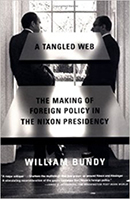
Will Kaufman
Will Kaufman is a professor in American literature and culture at the University of Central Lancashire, England. Also a singer and multi-instrumentalist, he has performed in a variety of musical performances about Woody Guthrie throughout the United States and Europe.
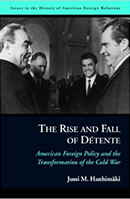
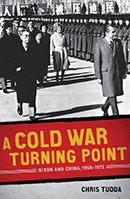
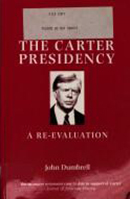

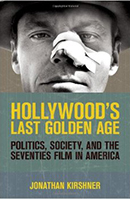
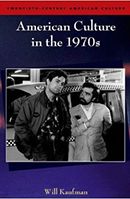
“Fiction and poetry, television and drama, film and visual culture, popular music and style, public space and public spectacle—these were the sites of cultural agitation that made the 1970s one of the most turbulent decades of the post-war period.”1 In American history, the era of seventies was one of the most vibrant, unique, and culturally diverse periods of all time. From the hippie era to anti-war movements, America’s culture began to grow and develop in the 1970s. Will Kaufman’s novel, American culture in the 1970s, thoroughly defined and analyzed the different aspects of pop culture that helped create a lively time period. The different elements that Kaufman incorporated and then subdivided into chapters were “Fiction and Poetry”, “Television and Drama”, “Film and Visual Culture” and “Popular Music and Style.” These areas produced a new volume of cultural expression that will never be forgotten. A vast amount of criticism arose surrounding the ideology that the seventies was a decade of narcissism and hedonism. Because the 1970s is often misinterpreted, Kaufman strategically covered the highs and lows of American pop culture.
From realism to postmodernism, the development of different genres of fiction and poetry brought about change in American literature. Kaufman wrote, “Literature and criticism shared a journey beyond the formal and textual concerns of postmodernism into a ground-swell of ethnic assertion in which plurality of marginalised voices emerged to transform…the face of the American canon.”2 Literary works from different racial backgrounds, including African American, Jewish American, Native American, Asian American, and Latino writings, were transformed in the 1970s. The ‘Black Aesthetic’ movement in the early seventies sought to convey a sense of black cultural nationalism. While African American fiction “boomed” in this era, a Nobel Prize writer, Toni Morrison, emerged to the scene. Her novel about African American oral tradition, Song of Solomon (1977), earned the title of one of the most significant American novels of the twentieth century. Native American and Asian American also contributed to the ethnic diversity of literature. Writers such as Leslie Marmon Silko discovered the calamity of assimilation in her novel Ceremony (1977), while another writer, James Welch depicted the differences between urban and traditional tribal principles in The Death of Jim Loney (1979). In 1976, Maxine Hong Kingston’s The Woman Warrior, illustrated the relationship between popular American values and traditional Chinese values. As for poetry, the 1970s marked a transitional watershed in American poetry. The Deep Image Poets led by Robert Bly and James Wright was established with the goal of fusing natural landscapes with mythic power. The Language Poets aimed to spread awareness of language as the center of perception and political involvement. Poetry displayed the different variations of subjects and expressed the different ideas of the American people. The outpour of this rich literature emphasized the cultural acclaim Kaufman is trying to prove and defined the versatility of literature that developed.
Television and drama played a significant role in entertainment in the 1970s. Situation comedies like M*A*S*H, All in the Family, and Saturday Night Live, influenced a mass audience and reflected political and social issues. These sitcoms generated creative energy that appealed to people. The Watergate hearings became increasingly popular because it showcased the power television had on political affairs revolving around President Nixon. In fact, television played an immense part in Nixon’s downfall as president. Women playwrights were involved with the feminist activism in American Society: “in 1972, six women dramatists- Adrienne Kennedy, Rochelle Owens, Megan Terry, Julia Bovasso, Maria Irene Fornes and Rosalyn Drexler- formed the Women’s Theater Council with the professed aim of challenging the male dominance of dramatic stage.”3 In addition, Ntozake Shange was perhaps the most dramatic expression of female solidarity. Her ‘choreopoem’, “for colored girls who have considered suicide/when the rainbow is enuf” (1975) revealed the political connection of sisterhood and black awareness, and drew a parallel to social activism. Kaufman also described that there was an explosion of African American theatre in the 1970s, which added to the cultural pot of diversity. Ranging from political turmoil, anti-militarism, artistic expression, and racial assertions, American drama, ultimately, was able to reflect on these areas to express people’s social concerns in society.
Kaufman continuously pointed out the different views that critics had on American Culture. Daniel Bell viewed the decade as “the sad degeneration of artistic representation.”4 Novelty, sensation, simultaneity, and impact, were Bell’s key traits for the ‘depleting’ functions of cinema. However, Kaufman perceived Film and visual culture in the seventies to be very dynamic and captivated a plethora of styles and genres. For example, the famous sequel of Star Wars was created in 1977. The science-fiction genre instigated state-of-the-art special effects which made Sci-Fi films very widespread. The advancements in technology increased the quality of horror and action films. Some popular horror films that were produced were William Friedkin’s The Exorcist (1973) and Richard Donner’s The Omen (1976). Blaxploitation was produced from the combination of ethnicity and crime in the 1970s. It “absorbed the dynamics of a counter-cultural race protest movement, creating a fertile arena for the growth of a visual black culture and propelling to the public consciousness the work of black actors, producers, directors, and musicians.”5 There were even some films about the Vietnam War produced in the 1970s. One of the most famous films now considered a classic was produced in 1972, The Godfather. These films revealed patterns of ethnic groups and also enhanced genres. Film was not the only example of visual culture, but art was a major component. Andy Warhol was a popular artist that created the iconic pop art images of Coca-Cola bottles and Campbell’s Soup. Many art forms emerged during the seventies such as video art and pop art. They included many practitioners such as Dan Graham and Joan Jonas. Photography was another visual aspect in American culture that was transformed. Diane Arbus, a photographer, “stood in direct opposition to the postmodern surfaces of Andy Warhol.”6 She captured eerie, unnatural photos that were both surreal and beautiful at the same time. Kaufman clearly explained the power of cinema and art visualizations during the seventies to present the creativity and originality people designed during the seventies.
Lastly, Kaufman summarized the major musicians and music genres that were introduced. Jimi Hendrix played his last concert on August 30th, 1970, and was dead three weeks later at the age of twenty seven. Another Woodstock legend, Janis Joplin, also died from a heroin overdose a month later. And then on the last day of 1970, Paul McCartney dissolved the Beatles through a court order. The era of music felt dead in the early seventies, but eventually it revived itself. Country music began to shine with the successful formation of the American band “The Eagles”. Music became an important factor in brightening up America’s culture because it allowed musicians to express themselves and have fun. Bruce Springsteen emerged in the 1970s and later becomes a music legend. Springsteen brought about social issues that pertained to the division of social classes: “Springsteen’s eulogies to the hard-working men of small town New Jersey reinforced, if anything, a sense both of stoic tradition and of betrayed bread-and-butter dreams among American males.”7 The New York Dolls was an American rock band formed in 1971 and was one of the first bands involved in the punk rock scene. Punk and new wave music was another musical genre that was developing but was challenged by the dominance of disco. Disco focused on a new take in music as “conservative message of conformity, expensive dress, and self-discipline.”8 Fashion style shifted with the rise of “skintight bell-bottoms, satin hot pants, velour T-shirts, three- to five-inch platforms….”9 Fashion, music, and style were key aspects in American culture that differentiated the seventies from all the other decades.
Will Kaufman believed the seventies to be a very intricate era that really predisposed America’s culture and society. Each chapter Kaufman wrote about the opinions and thoughts of critics during this era. He would then contradict their ideas and provided a variety of concrete evidence that portrayed the seventies as a momentous decade. His purpose was to address the issues and common misconceptions people had on the seventies: “A number of problems immediately occur when one attempts to conceptualize ‘the seventies. ‘The first is the apparent uncertainty of “the decade as a meaningful periodising marker.”10 He mentioned critics such as Daniel Bell, Christopher Lasch, and Tom Wolfe and their arguments that the seventies are confined to narcissistic tendencies and value extreme individualism. The novel’s purpose is to exemplify the 1970s from top to bottom and to provide factual evidence to deliberately show how this decade affected American culture. Kaufman proved this era to be a very important and impactful one to all the critics who misunderstood this decade. Overall, Kaufman divided his novel into sections to specifically represent the central highlights of American culture in the 1970s.
Will Kaufman grew up in Montclair, New Jersey and is a Professor of American Literature and Culture at the University of Central Lancashire, England. He is also a professional folksinger and multi-instrumentalist. He wrote the first political biography of America’s balladeer, “Woody Guthrie, American Radical.” Kaufman also created a live documentary that sets the songs of Woody Guthrie in the perspective of the American 1930s, which includes the Dust Bowl, the Great Depression, and the New Deal. Kaufman has performed hundreds of musical performances on Woody Guthrie at schools, music festivals, and folk clubs throughout United States and Europe. At first, Kaufman was skeptical in to writing a novel on the 1970s because he wasn’t familiar with the era, but was more accustomed to the nineteenth-century. He was offered the opportunity from Martin Halliwell and from Nicole Ramsey at Edinburgh University Press to contribute to Halliwell’s ‘Twentieth Century American Culture series.’ In his acknowledgements he stated how he was in his teens during the seventies, and that it was not a happy or exciting time period for him: “My mother was recently widowed, a low-paid secretary trying to three boys through a string of job losses against a backdrop of high inflation and high unemployment: the previously unheard-of combination called ‘stag-flation.’”11 He heard of Springsteen and Nixon, but he didn’t understand their significance at the time of when he was young until he actually grew up. These occurrences and thoughts led him to write this novel. American Culture in the 1970s was published in 2009 and is one of the many novels a part of the American Culture series of the twentieth century. Because Kaufman was involved with a novel series, his writing could be a little more biased since it had to appeal to the historical and cultural legacy of the eras. The series was created to display a variety of cultural studies through twentieth-century and to rethink the ways the decades are usually perceived.
“A Sectionalized Look at ‘70s America” by Donald E. Morse was a book review on Kaufman’s novel on behalf of the University of Debreen CAHS. He stated American Culture in the 1970s as “a pleasure to read and learn from and deserves a place on the shelf of every Americanist and in all libraries with collections of American Studies.”12 Morse thought the novel was a solid resource for research and a prime novel to read if you are interested in extending your knowledge on America’s culture in the seventies. He also pointed out his satisfaction with the organization of the novel when he stated, “Each sub-head then forms the basis for self-contained chapter thus creating a repetitive but coherent structure for examining the decade in depth.”13 In addition, Roy B. Browne was another book critic who stated that Kaufman does manage to summarize the era, but questioned the novel’s predicaments. He says, “But in many aspects, only parts of the decade have been caught and digested in Kaufman’s book. So many a representative sampling is the best one could expect?”14 He pointed out how older readers might be skeptical of the “trendy diction” Kaufman used in his novel. Browne also pointed out Kaufman’s outlook on the decade of narcissism and nostalgia, and Christopher Lasch strongly influenced the era. Both book reviews had mixed opinions on the novel but overall still found Kaufman’s novel to be informative and comprehensive.
Will Kaufman’s novel, American Culture in the 1970s, was a highly detailed and descriptive novel that elaborated on the key highlights of pop culture in the seventies. It illustrated the whole era, from beginning to the end, and the events that influenced that caused a shift in culture. From the top music hits to the famous works of literature, Kaufman analyzed the era very thoroughly with the extensive resources he used to write this novel. He even included a chronological timeline that justified all the events and all the clearly listed the cultural elements of the seventies, which made it really professional and profound. In addition to its clear organization, Kaufman featured key texts that provided extensive knowledge on specific topics and famous people. Sometimes it became too abundant and wordy, but it was always easily summarized in the end. Because the 1970s was post-Vietnam War and a time of anti-war movements and conformity, Kaufman used these events to influence the subjects of the novels. The seventies could be perceived as a continuation of the 1960s because of its counterculture and how social progressive values further evolved. Started in the 1960s and faded through the 1970s were movements on political and economic liberty for women. Even the hippie culture continued to the beginning of the 1970s. The fashion sense was also similar in the sixties and seventies, but just more flamboyant and fun. Even though the United States experienced some crisis during this era, Kaufman still supported the 1970s and conveyed the successes and achievements during this era. In the last sentences of the novel, Kaufman concluded the novel with a comparison between Diane Arbus’s photographs as the seventies and stated, “they are not merely ‘looking’, but positively begging for ever-renewed interpretation.”15 The seventies enhanced the ideals of American Culture and some of America’s biggest legends arose during this era.
The seventies will never be forgotten, but will always be looked back on. It was an era where people were discovering their talents and stepping out of the social norm. And, it was an era where culture blossomed and branched out to new ethnic backgrounds. Will Kaufman’s American Culture in the 1970s, gave a detailed analysis of America’s literature, film, art, and fashion during the 1970s and hopefully sparked a new perspective: “If this book succeeds in its objective, then the 1970s- and ‘the seventies’- will never look the same again.”16
Footnotes:
- Kaufman, Will. American Culture in the 1970s. Edinburgh: Edinburgh University Press, 2009.26.
- Kaufman,Will. 27.
- Kaufman,Will. 78.
- Kaufman,Will. 81.
- Kaufman,Will. 98.
- Kaufman,Will. 107.
- Kaufman,Will. 126.
- Kaufman,Will. 132.
- Kaufman,Will. 136.
- Kaufman,Will. 1.
- Kaufman,Will. ix.
- Morse, Donald E. “A Sectionalized Look at ‘70s America.” (n.d.): n. pag. Web.
- Morse, Donald E. “A Sectionalized Look at ‘70s America.” (n.d.): n. pag. Web.
- Browne, Roy B.” The Journal of American Culture.(n.d): n. pag. Web.
- Kaufman, Will. 181.
- Kaufman,Will. 26.
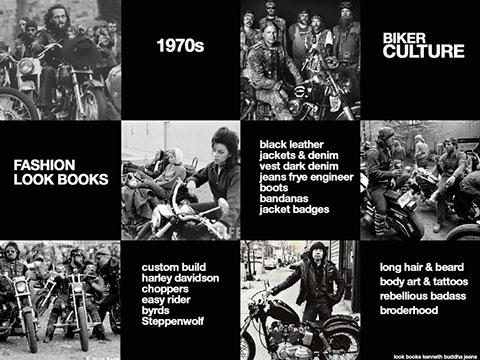
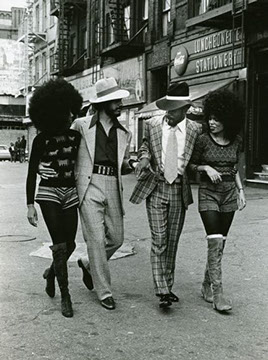
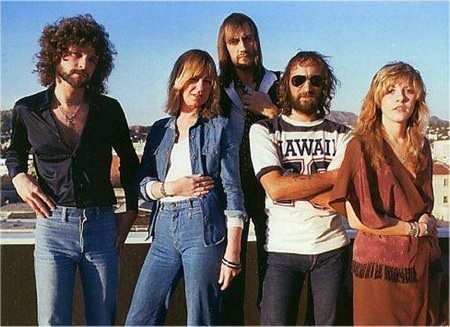
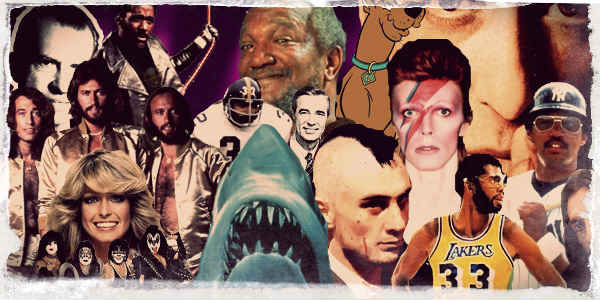
4 - 4
<
>